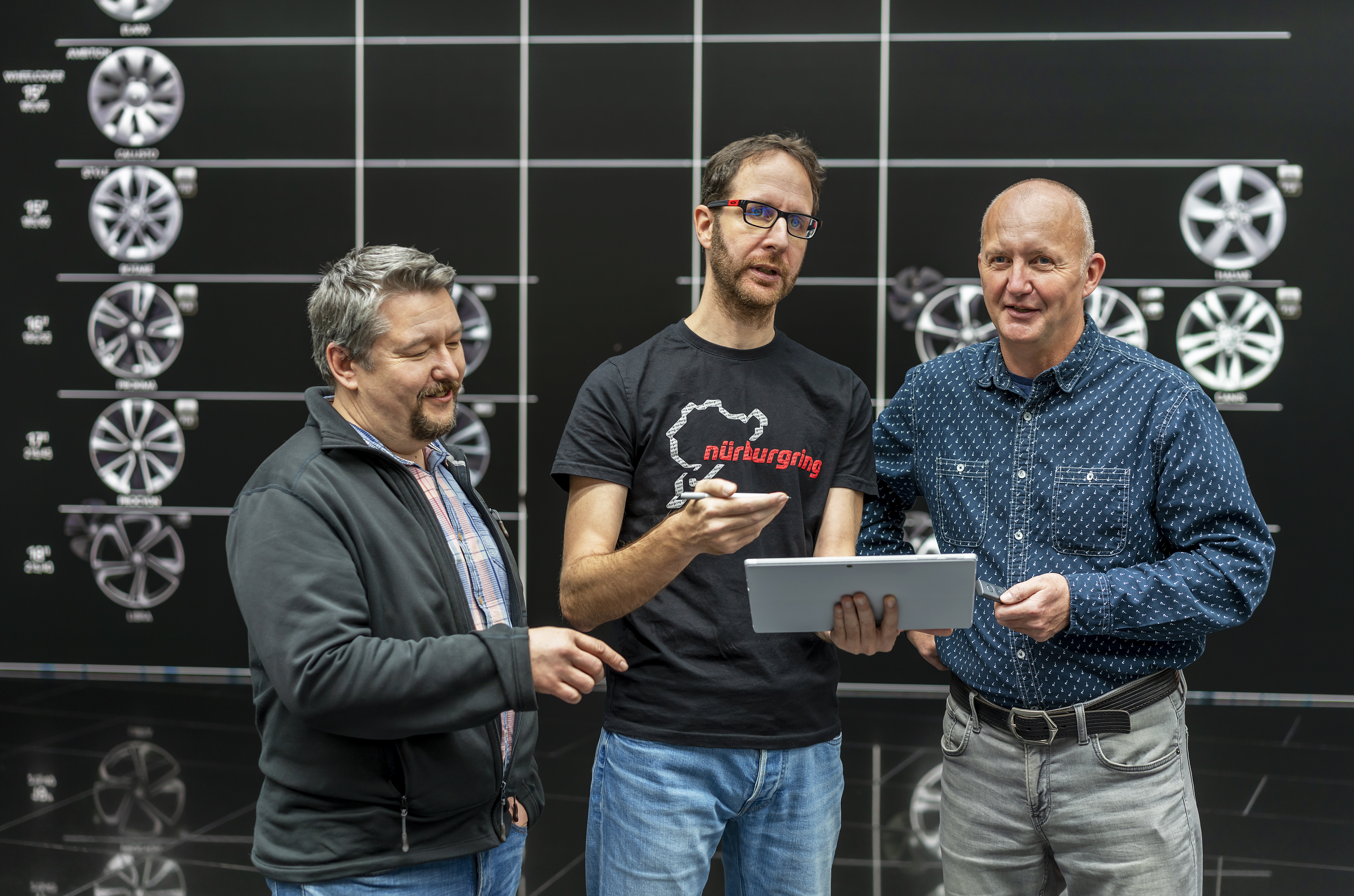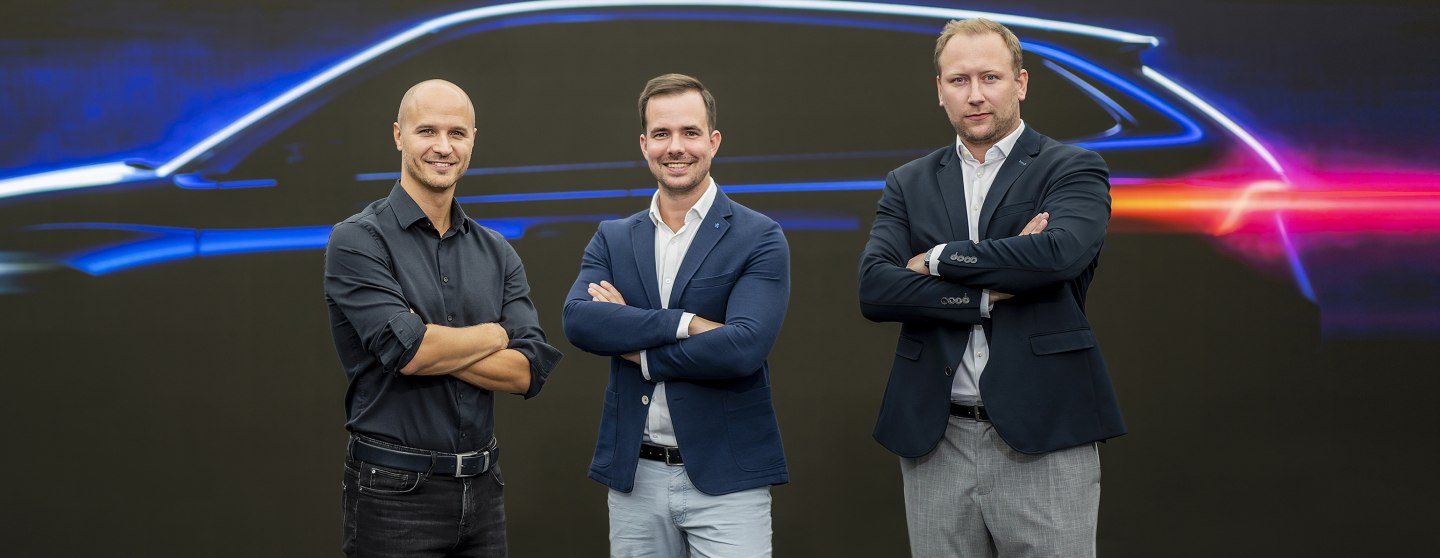Presentation like a video game
This kind of work in loops as the model is gradually fine-tuned takes about 22 months. At a later stage the digital model serves as the basis for a clay model (more on that next time). From the clay model, the modifications are scanned back into the 3D model and fine-tuned again. “The data we generate make it easier for other ŠKODA departments to work on their parts of the upcoming car,” says János Bársony.
Presentations are another important part of working in the digital environment. What’s more, their importance has understandably grown in the last two years. In the virtual environment, the teams now present the cars not only to their superiors and for consulting with the designers: they also present the work being done on the car to the company management and the management of the entire group. In this way, the car is fine-tuned in a virtual environment across the world, for example with colleagues from India.
 Members of the Design Modelling and Digitalisation department responsible for exterior design
Members of the Design Modelling and Digitalisation department responsible for exterior design
Special software is used for visualisations, but surprisingly, the technology is also quite “democratic”. ŠKODA uses the Unreal or Unity videogame engines for this purpose. These are used to create static visuals, and realtime design presentations. “One of the reasons we use them is that their output works effectively with the various virtual reality glasses we use. They’re also fairly open platforms that we can programme almost anything we need into. And last but not least, game engines are designed to provide the best possible graphic output at the minimum CPU use,” explains Radek Šimon.
Common design presentations, especially those in 3D, can therefore be done using relatively “ordinary” computers with powerful graphics cards. For very complex and complicated models displayed by method Realtime Raytracing is using high performace computing cluster. This is the hardware, as well as the workstations and interactive sketching tablets that the designers and modellers work with, that Radek Šimon tests and provides for the design team.
 The Design Modelling and Digitalisation department includes a team that works on wheel design.
The Design Modelling and Digitalisation department includes a team that works on wheel design.
One of the innovations his team has managed to put into operation in the past few months is the new presentation wall. In the design presentation room at the Česana office in Mladá Boleslav, a state-of-the-art LED walls Samsung The Wall with 8K resolution is now in operation – there are two of these six-metre high surfaces side by side. “Making them operational was not easy. We were in intensive contact with the developers in Korea and we even had to convince them that our spaces would do justice to this cutting-edge technology,” says Radek Šimon. This is yet more proof of how ŠKODA is constantly striving to be a frontrunner in the digital sphere.





































